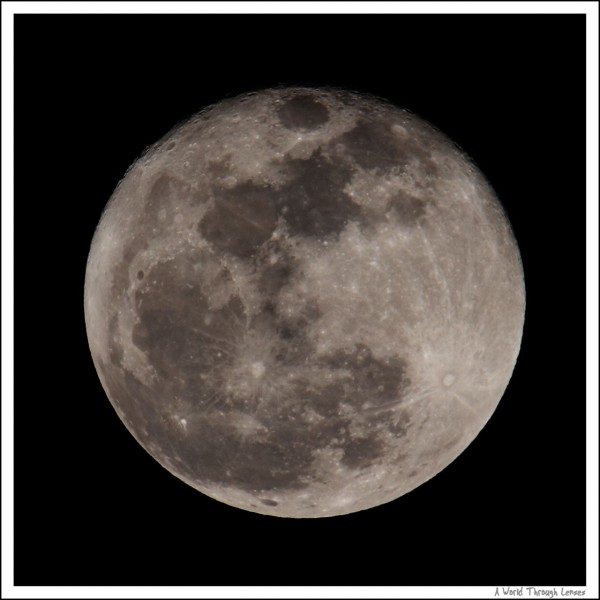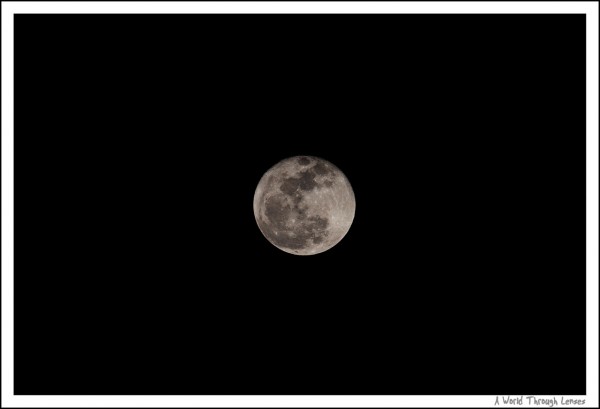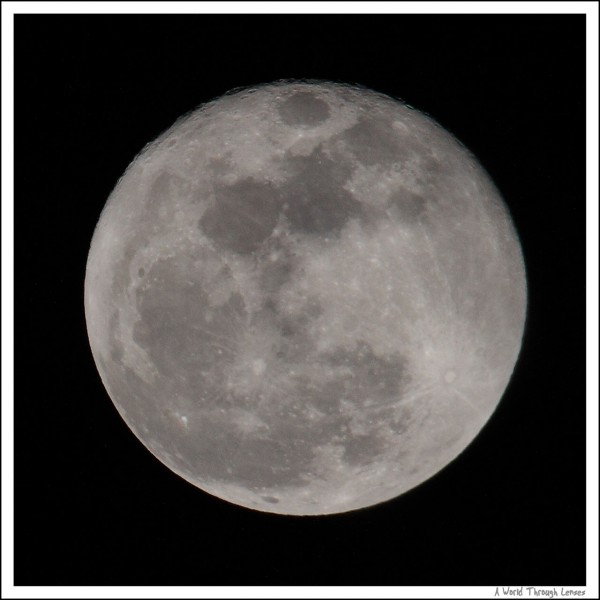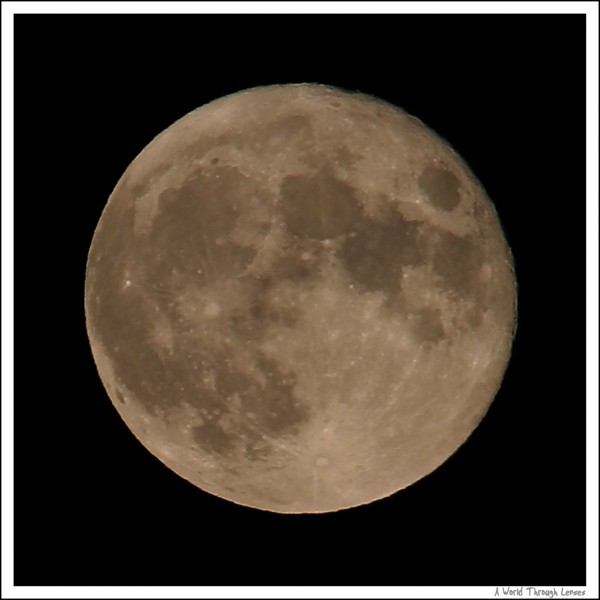Today is the first full moon of 2010. That large beautiful moon up on sky is calling out to me to try out my Canon 7D DSLR on it. So despite the -15°C (with wind chill -20°C) weather, I geared up and went to my backyard for a bit of backyard astronomy. Okay so it is not the ideal place to do any astrophotographing since I live right in the city. The large amount of light pollution from city lights and the air distortion in the city are all enemies of astronomy. But in such cold weather, I really don’t want to drive up north just for a few photo of the moon. Not to mention, just as the title suggests, I don’t actually own a telescope. I was merely trying to see how much my Canon EOS 7D can capture when combined with my long lenses. I have a Sigma 100-300 F4 and a Sigma 1.4x teleconverter. The Sigma 100-300 F4 @ 300mm coupled with the Sigma 1.4x teleconverter gives me a focal length of 420mm. On the 1.6x Canon EOS 7D it gives me an effective 672mm focal length.
I started with my daily tripod / head combo, the Gitzo GT1541 Mountaineer carbon fiber tripod and Markins Q-Ball Q3 Emille. Now that’s one big mistake. The little 4 section light Gitzo tripod is obviously not stable enough to photograph something that’s some 380,000 kilometers away, which is how far the moon is away from the earth. And the Markins Q-Ball even though stable enough to shoot earthly things but definitely slips a bit when having the big lens aimed upwards. So even with mirror locked up, and remote release cable, the image is still very blurry. Here’s the result, click on the image to see in full resolution.
Canon 7D, Sigma 100-300 F4 @ 300mm, Sigam 1.4x teleconverter, manual exposure @ ISO 100, F8, 1/100 sec, manual focus using live view.

Noticing that the lens is shaking too much, I took out my heavier tripod: Manfrotto 055 Pro. Then I coupled it with a much heavier head: Manfrotto 410 Compact Geared Head. I also had a Manfrotto 3419 Micro Positioning Plate (which is replaced by Manfrotto 454 Microsoft Positioning Plate now) on the geared head because this was my macro head. So now having a much stronger platform, I took a few more shots. I decided to close down the aperture a bit more and shot it at F11. The result is below. Click on the image to see in full resolution.
Canon 7D, Sigma 100-300 F4 @ 300mm, Sigam 1.4x teleconverter, manual exposure @ ISO 100, F11, 1/100 sec, manual focus using live view.
And just in case you wonder just how much magnification the lenses combo above put out, here’s a full frame from my camera of the same image above. It’s scaled for web purpose but otherwise not touched. You can get a sense of just how big the moon covers the frame.
The next set of shot are just playing around. Trying to see if a higher shutter speed can help in further reducing the blurriness introduced by the vibration, I increased the ISO to ISO 400. This allow me to shoot in 1/400 sec. It seems to be sharper especially in the area a bit further away from the edge. However, the ISO 400 did also introduced a large amount of noise into the image. So in the end it didn’t seem to be worth it. Click on the image to see in full resolution.
Canon 7D, Sigma 100-300 F4 @ 300mm, Sigam 1.4x teleconverter, manual exposure @ ISO 400, F11, 1/400 sec, manual focus using live view.
The images above all have been processed a bit using level and contrast in Photoshop. Here’s the same shot above straight out of camera. Only cropped for size. Click on the image to see in full resolution.
Of course this is by far much better result than what I got years ago using a Canon 10D. And live view functionality on the 7D certainly helped a lot by allowing me to focus on the moon manually by using the 10x zoom on the live view. The following shot was what I was able to capture back then as posted in my Algonquin park cottage trip post. The equipment used was pretty much identical, the same Manfrotto 055 Pro tripod but with a Gitzo ball head, Sigma 100-300 F4 @ 300mm and Sigma 1.4x teleconverter. And if you click on the image below to get to the full resolution, it is clear that the amount of detail the 7D capture is so much more. Now I can only dream what I might be able to capture using a Sigma 50-500 @ 500mm and maybe even add another 2x teleconverter into the mix. But for now, I’m happy what I can get with the equipment I have on hand.




Fantastic photos but I was just wondering if you use some kind of moon light filter because all of my pictures just have the moon as a bright ball and I was just wondering how you managed to get the details because I just get white.
Many thanks,
Dean
No I don’t use any moon light filters. If you get all white in your moon shot, it’s probably because your camera’s automatic exposure calculation is over exposing the moon. Keep in mind that yes the frame is mostly black, but the moon is in fact really really bright. Your average camera’s automatic exposure will try to make the black scene more like 15% gray. But in this particular case, your want the sky to be dark, close to 100% dark. So the automatic exposure in this case always over exposed it by 15% or so. What you need is to either dial in some exposure compensation, or in my case, I use manual exposure, I started with some value that I think it’s good, take a quick shot just to check the exposure. I look at the histogram until I see that I have most of the parts in black and the rest are not hitting 100%, I adjust if necessary until I get a good exposure setting. Then I try to frame for the shot.